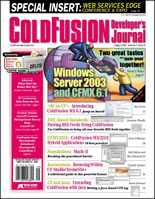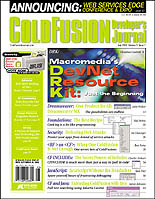Geoff makes a couple blanket statements in his post about how the Java world doesn’t understand CFMX. I don’t agree with a couple of them:
· ColdFusion remains the only answer to making Java accessible to a mass of non comp-sci web developers — I don’t have a computer science degree, neither do 3 of the other 4 developers at Mindseye (all of whom have written Java applications and all of who have spoken at DevCon) and I’ve created a couple sites using Java & JSP technology so to say that non comp-sci web developers can’t understand Java is patently incorrect. I think it also bears mentioning that Java is considered by some to be a language for the masses:
“The advantages of Java is that it easily serves as a lingua franca – everyone can read a Java program and understand what is going on…“,
· …most Java developers fail to see where CFMX fits into their world of programming… — Why should they care? There are a number of other scripting languages that work with Java, PHP being one of them. Java developers have enough to worry about… they’re too busy choosing between web frameworks (struts, tapestry, webwork2), persistence models (obj, castor, jdo..) and templating mechanisms (velocity, cocoon..). It’s commonly mentioned/demonstrated that ColdFusion is easy by showing how few lines it takes to query a database, but has anyone ever asked an enterprise Java developer how many queries they put into a JSP? .
With that said, I think that Geoff has the right attitude, starting a “.. post-positive campaign highlighting CFMX/Java symbiosis” is a great starting point. Go one step further though. Build a J2EE application, learn Struts, use OJB. Geoff claims that J2EE people don’t understand CFMX. How well do CFMX people understand J2EE?
 The second of my articles in ColdFusion Developer’s Journal is available on the website now:
The second of my articles in ColdFusion Developer’s Journal is available on the website now:  Just got back from a trip to California & Oregon for a family wedding to find that the
Just got back from a trip to California & Oregon for a family wedding to find that the